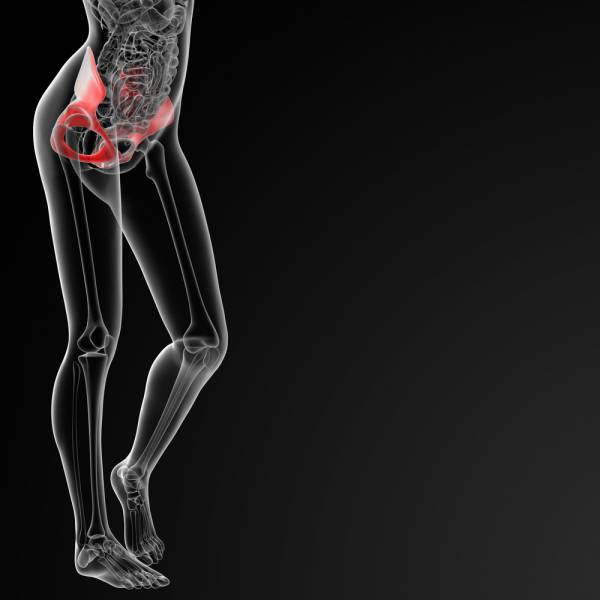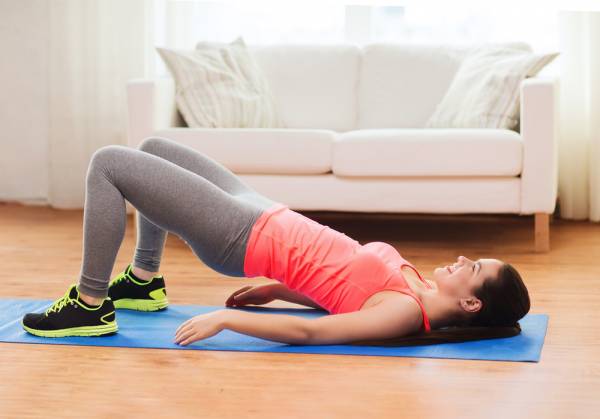We’ve all read our fair share of warm-up articles, so there’s no need to go through a spew of why warming-up is a must and if you don’t do it Chuck Norris will roundhouse your ass. Instead of beating a dead horse, let me give a slightly different approach that may benefit your warm-up.
At our facility, no matter if we are training athletes, youngsters, or general clients, we take a three-pronged approach to our warm-ups:
- Alignment
- Movement Skills
- Activation
I’m going to break down these three areas and explain why I feel each is important.
Click To Tweet: Build a Better Warm Up with Alignment, Movement Skills, and Activation
Alignment
Many dysfunctions, aches, and pains stem from poor alignment, specifically pelvic alignment. The pelvis is in a unique position in that it can directly affect both the upper and lower body.
The Postural Restoration Institute (PRI) has made a big push in recent years to educate people on the effects of pelvic alignment. A common pattern PRI has identified is something called the left anterior interior chain pattern, or left AIC.

Due to the way our body is structured, we are naturally asymmetrical, and many people tend to fall into this left AIC pattern. It is easily identified by the left side of your pelvis being tipped anteriorly and rotated towards the right. This can lead to the left femur sitting externally rotated and abducted, the right femur internally rotated and adducted, and the lumbar spine rotated to the right.
There are a few ways to test whether you have left AIC, but an easy way is to check your static posture. If you tend to have your weight shifted to the right and hang out in your right hip, then you probably present this pattern. I know I definitely fall into this category, and will catch myself hanging out in my right hip when I’m standing for long periods of time (as pictured above.)
As you can guess, this has the potential to cause problems up and down the chain. On top of that, if you continue to strengthen or stretch in poor alignment, you’re further creating imbalances and instability.
So at my facility, we start every training session with a quick pelvic alignment exercise to set ourselves in a good position before we start adding movement and weight. Closely tied in with pelvic alignment are correct breathing patterns. The breathing muscles play an important role in pelvic control and muscle tone. Linking breathing, pelvic stability, and pelvic alignment together takes a well-rounded approach to this phase.
Movement Skills
After alignment we move on to movement skills. Here we will progressively attack dynamic mobility, stability, range of motion, heart rate, body temperature, coordination, body awareness, and overall movement skills.
Here is an example sequence of fifteen exercises performed for fifteen yards each:
- Lunge Elbow to Instep with Rainbow
- Inch Worm
- Overhead Lateral Lunge to Quad
- Walking Romanian Deadlift
- Spiderman
- Crossack with Rotations
- Jog with 360s
- Shuffle with Swings
- “A” Skip
- Lateral Skip
- Backpedal
- Backward Open Hip
- High Knee Carioca
- “A” Run
- Falling Start
As you can see this is your typical dynamic warm-up, but we have a couple of objectives we like to target. We have a checklist of movements and positions we want to challenge during this portion and they include linear, lateral, backward, rotational, single-leg stance, quadruped position, and upper-lower body separation.
So it’s more than just skips, carioca, and shuffles. We have a rhyme and reason for our movement choices and how they will carry over. Challenging the body through different movements and planes targets total joint range of motion, prepares the body as a whole, and improves spatial awareness.
Activation
Finally after alignment and movement skills, we finish off with activation. We activate to deeper engage specific musculature we want to use during our session. Essentially we want to wake up and learn how to feel these muscles being active.
Now we aren’t saying certain musculature is dormant, this is an exaggeration, but activation is essential to isolate certain muscles and movements to make sure we know, for example, what our glutes feel like and that other muscles aren’t compensating for them.
This section of warm up will typically include the following:
- Glute Activation
- Core/Spinal Stability
- Scapular Control
- Hip Control
We like to finish off our warm up with activation because we want to add stability and control on top of our added alignment and mobility. This goes back to many coaches preaching mobility before stability – making sure we aren’t adding strength or control on a poor movement pattern.

Depending on the day’s workout, activation can be catered. If we have a lower-body or speed-training day, our activation will prepare for that. If we have a heavy upper-body day, our activation will prepare to that.
As an example, here are three easy activation routines:
- Glute Bridge 2×15
- Naughty Dogs 2x10ea
- Bird-Dog 2x6ea
- Push-Up Rotations 2x3ea
- Glute March 2x10ea
- Deadbug 2x6ea
- Band Pull-Aparts 2×20
- Bent-Over Y,T 2x6ea
- 3-Lunge 2x3ea
- Airplanes 2x6ea
- Yoga Push-Ups 2×6
- Clams 2×12
Our System Put to the Test
We recently did self-study at our facility to get an idea if our activation was accomplishing what we wanted. Clients told us they liked the activation portion and we noticed some good long-term benefits in terms of posture, reduced joint pain, and improvement of certain asymmetries and imbalances. But we were curious about the acute changes in performance.
Over the course of six weeks, we tested performance in the standing long jump, ten-yard acceleration, and reverse medicine ball toss, both with and without an activation portion. Long-story short here were our results with 42 people tested:

As you can see from the results, activation points towards improved performance. In the standing long jump, there was an improvement of over three inches. This is significant and definitely something that may be worthwhile for jumping athletes to test out.
The ten-yard dash didn’t show what would be considered a measurable difference, only a hundredth of a second difference. Nevertheless, it is still a slight improvement and may be something that needs further investigation.
On the flip side, the reverse medicine ball toss showed an improvement of seventeen inches with activation. Therefore, activation may be of consideration for throwing and single-output type of athletes.
Overall these results point to activation benefiting single bout strength/power movements. Acceleration or multiple jumps on the other hand involve a great deal of repeated elasticity and shorter ground contact times, which activation may not be able to improve. If this is an area of desired performance, it may be beneficial to add in some low-intensity plyometric work, along with activation for improved results.
The Cool Down on Warming Up
Whew, you’ve made it through another warm-up article. Hopefully this had some new information for you and maybe some light bulbs went off. Warm up may not the sexiest part of your training day, but you know what else isn’t sexy? Being an immobile and injured ball of meat.
Photos courtesy of Shutterstock.






